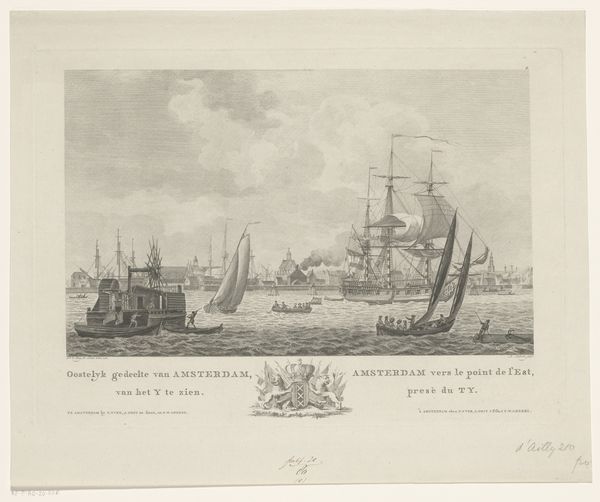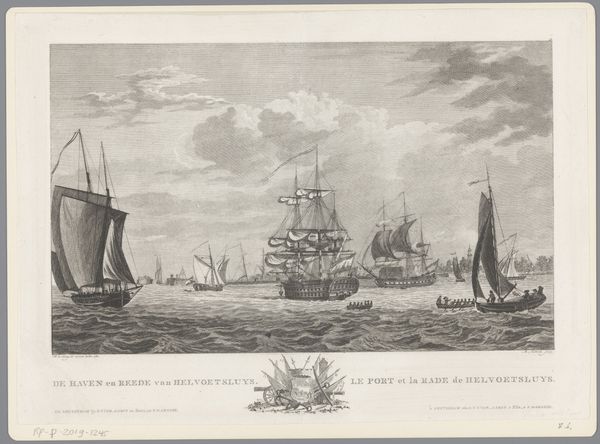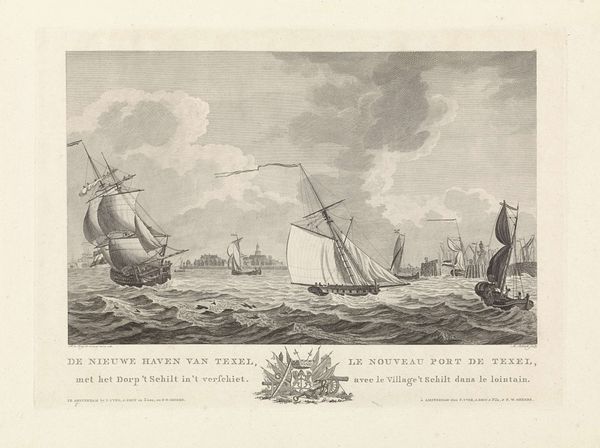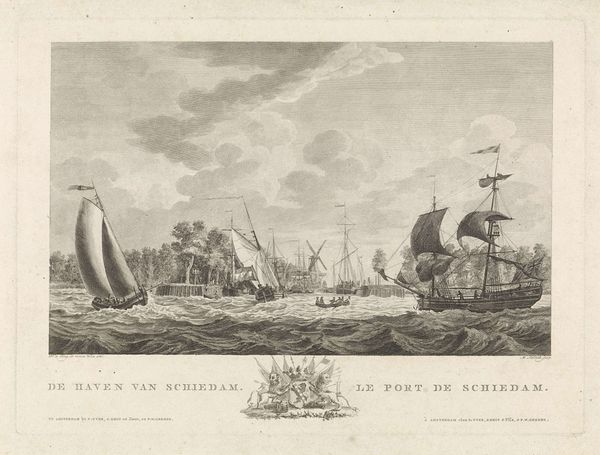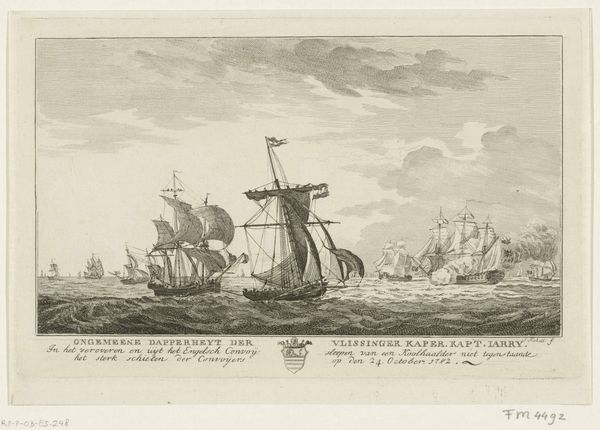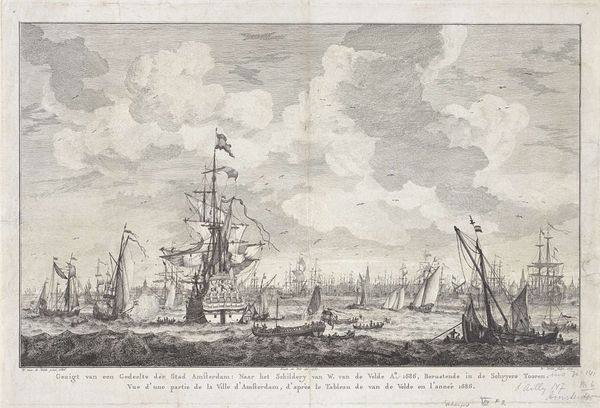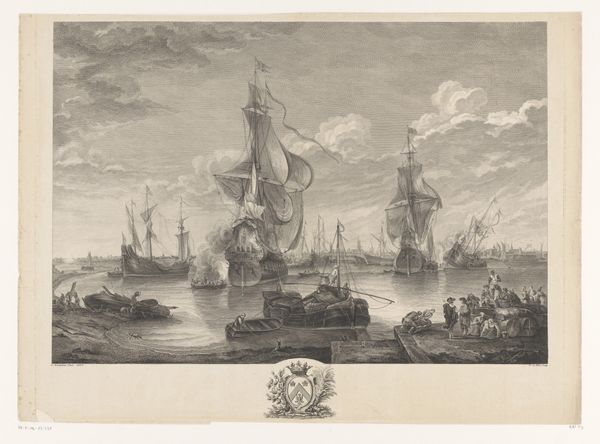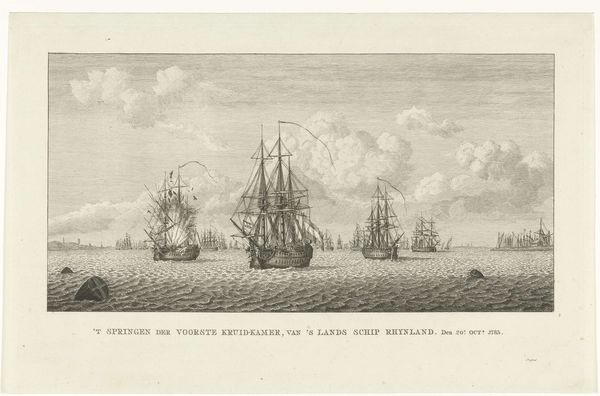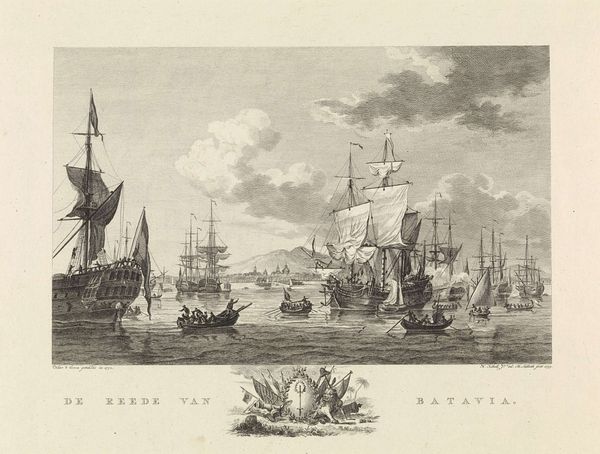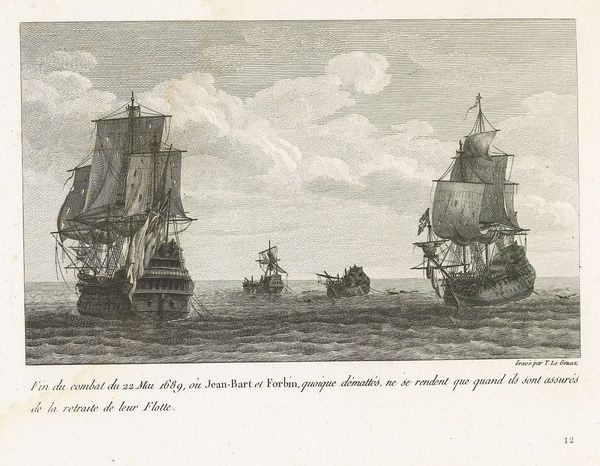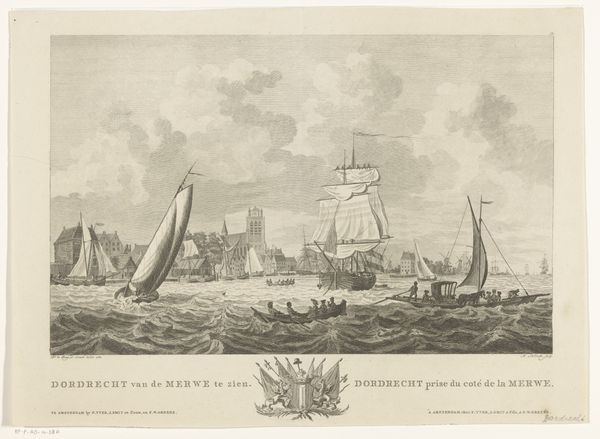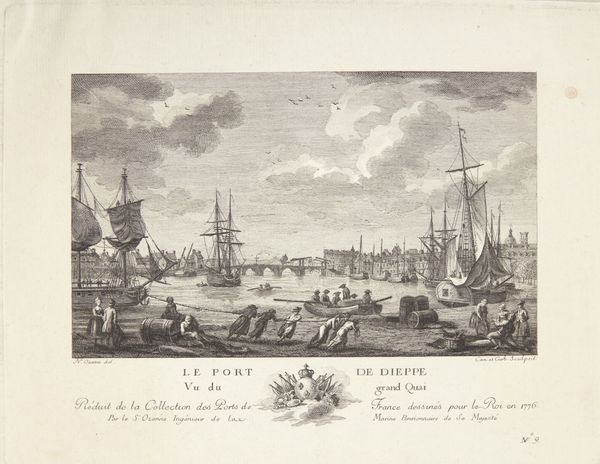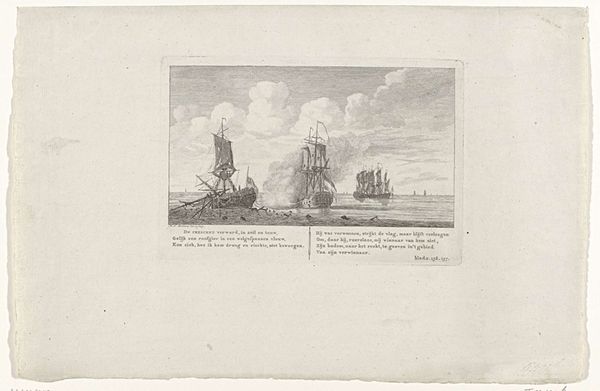
print, engraving
#
neoclacissism
#
dutch-golden-age
# print
#
landscape
#
15_18th-century
#
cityscape
#
engraving
Dimensions: height 285 mm, width 395 mm
Copyright: Rijks Museum: Open Domain
Curator: Here we have "View of the Harbour of Edam," a print made between 1780 and 1787, currently held at the Rijksmuseum. Mathias de Sallieth created this piece using engraving, showcasing a detailed cityscape and embodying elements of Dutch Golden Age landscape art. Editor: My first impression is that there is a real sense of commerce, not as frenetic, though, as some Dutch paintings of bustling marketplaces. But this still exudes the calm assurance of a society deriving its wealth from the seas. Curator: That sense of assurance you perceive aligns with the broader political context of the time. Consider how port cities were points of intense intersectionality—economic, cultural, and political. Who has access, who gets what, and why? The seas themselves become extensions of Dutch identity, so bound with power structures and trade routes across the world. Editor: I immediately noted the symbolic weight of the vessels—each is unique in build and riggings. The larger merchant ships aren't simply vehicles; they visually echo emblems of Dutch power, perhaps even consciously so given that the nation was consolidated only a century prior. Curator: Yes, and if we unpack this further, we might want to think about the lives of sailors who traverse the seas. What might a contemporary, decolonial reading reveal about power dynamics enacted across geographical borders? Who benefits most visibly in this "View"? And who labors unseen to keep everything afloat? Editor: The composition steers my reading; our vantage, positioned firmly onshore, reinforces that dominant view. The boats sail towards a city whose structures appear compact and unified against the skyline. A deliberate stylistic choice may invoke the steadfast qualities valued in urban life. Curator: Agreed. Furthermore, consider that during this era, urbanization and landscape depictions were directly tied to developing notions of nationhood. Depicting the Edam harbor, a space for commerce and exchange, serves to project stability and perhaps even an unspoken colonial authority onto Dutch society. Editor: Seeing it this way, de Sallieth's rendering is not solely observational; instead, he selectively captures key civic and national emblems, which are designed to evoke collective ideals. What appears to be simply scenery also presents coded national mythos and economic values. Curator: It’s in this push and pull between idealized symbolism and harsh reality, the portrayed tranquility of a bustling center and colonial ambitions abroad, that a deeper meaning of "View of the Harbour of Edam" arises for modern audiences. Editor: Precisely! Visual details resonate on multiple levels that offer access points into more layered sociopolitical understanding, long past just ships and harbors.
Comments
No comments
Be the first to comment and join the conversation on the ultimate creative platform.
